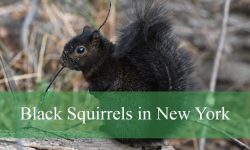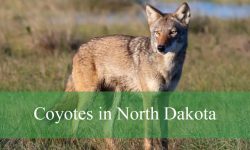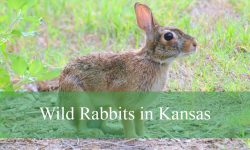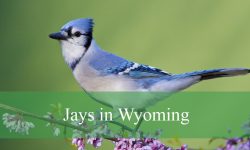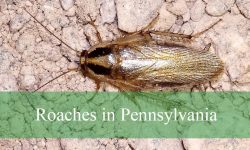The Golden-cheeked Warbler (Setophaga chrysoparia) is one of the most fascinating and rare songbirds in North America. This small migratory bird stands out with its striking golden cheeks and distinctive black mask, making it easily recognizable among bird species.
What truly sets the Golden-cheeked Warbler apart is its exceptionally limited range. Unlike many birds that roam across several states or countries, this species lives exclusively in Texas. This unique fact has intrigued bird watchers, conservationists, and nature enthusiasts alike.
So why does the Golden-cheeked Warbler only call Texas home? What makes its habitat so special? In this article, we will delve into its natural history, habitat needs, conservation status, and ecological importance to understand why Texas is the only place this remarkable bird can be found.
The Golden-cheeked Warbler: An Overview
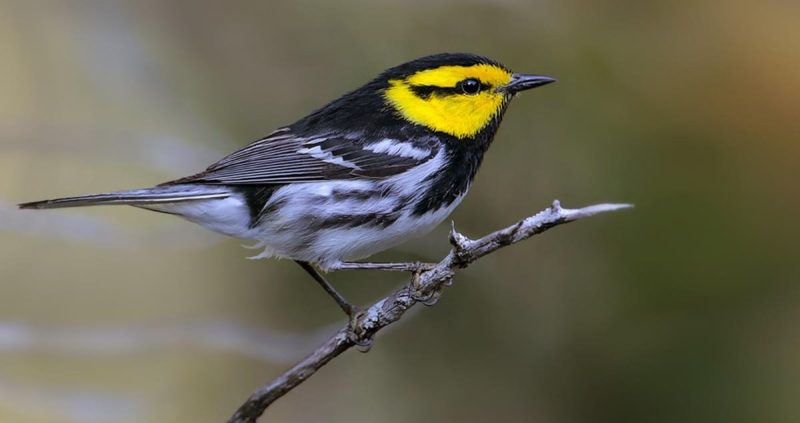
The Golden-cheeked Warbler is a small songbird, roughly 4.5 inches long, with a distinctive appearance that makes it easily identifiable. The males are particularly striking, sporting bright yellow cheeks and crown patches set against a black mask and streaked back. Females and juveniles have duller coloration but retain the characteristic yellow and black pattern. These birds are insectivores, feeding primarily on caterpillars and spiders, which they forage from the bark and foliage of trees.
This species is a Neotropical migrant, spending winters in Central America before returning to Texas in the spring to breed. Its migration is long and perilous, but it has evolved this specific pattern for reasons tied closely to its breeding habitat needs.
Why Does the Golden-cheeked Warbler Only Live in Texas?
The fact that the Golden-cheeked Warbler only breeds in Texas is a striking example of habitat specialization and evolutionary adaptation. The bird’s breeding success depends on very specific environmental conditions, primarily found in the unique juniper-oak woodlands of central Texas. These woodlands provide not only food but also essential nesting materials that the Golden-cheeked Warbler cannot find elsewhere.
Unique Habitat Requirements
The Golden-cheeked Warbler requires a habitat characterized by a mix of mature Ashe juniper (often called cedar) and various species of oak trees. The Ashe juniper provides the critical nesting material: strips of bark that the female warblers use to build their nests. This bark is long, fibrous, and flexible, perfect for constructing the delicate cup nests high in the trees.
Meanwhile, the oak trees offer a rich foraging ground. These trees support a diverse community of insects, which make up the warbler’s diet. The combination of juniper for nesting and oak for feeding creates a very specialized environment that is largely confined to the Texas Hill Country and adjacent areas.
Geographic Isolation and Endemism
The warbler’s restriction to Texas is also a consequence of geographic and ecological isolation. The juniper-oak woodlands form a patchy but distinct ecosystem that does not extend much beyond central Texas. Outside this region, the tree species composition and forest structure differ, lacking the necessary juniper bark strips and suitable insect populations.
Over thousands of years, the Golden-cheeked Warbler has adapted to this niche habitat, and it has become a Texas endemic, meaning it is native to and found only within this specific geographical area. This endemism makes the species especially vulnerable to environmental changes, as it has limited ability to relocate or adapt to other habitats.
The Life Cycle and Breeding Behavior in Texas
The Golden-cheeked Warbler’s life cycle is closely intertwined with the Texas breeding season, which typically runs from late March through early July. When the birds return from their wintering grounds, they immediately begin establishing territories within the juniper-oak woodlands.
Nesting and Reproduction
Female warblers carefully select suitable nesting sites high in the mature Ashe junipers, often 15 to 50 feet above the ground. The female constructs a small, well-camouflaged cup nest using the strips of bark pulled from the juniper trees, mixed with grasses, spider silk, and other fine materials.
The nests are expertly hidden among dense foliage, providing protection from predators and harsh weather. The female lays between three to five eggs, which hatch after about two weeks of incubation. Both parents feed the hatchlings a steady diet of insects, ensuring rapid growth during the fledging period.
Foraging Habits
During the breeding season, the warblers forage extensively within the oak canopy, searching for caterpillars, spiders, and other arthropods. Their insectivorous diet plays a crucial role in controlling insect populations in the Texas woodlands, contributing to the overall health of this ecosystem.
The warblers exhibit remarkable agility, gleaning insects from leaves and bark with quick, darting movements. This active foraging is vital to sustain the energy demands of nesting and raising young.
Conservation Challenges and Efforts in Texas
Given its limited range and specialized habitat requirements, the Golden-cheeked Warbler is highly vulnerable to habitat loss and fragmentation. Urban development, agriculture, and land clearing in central Texas have significantly reduced the available juniper-oak woodlands, leading to population declines.
Habitat Loss and Fragmentation
As Texas has experienced rapid growth, the Hill Country woodlands have been increasingly fragmented. Smaller, isolated patches of habitat make it difficult for warblers to find suitable nesting sites and adequate food supplies. Fragmentation also increases the risk of predation and nest parasitism by species such as the Brown-headed Cowbird, which lays its eggs in warbler nests.
Legal Protection and Conservation Programs
The Golden-cheeked Warbler is listed as endangered under the U.S. Endangered Species Act, reflecting the urgency of its conservation needs. Various federal and state agencies, along with private landowners and conservation groups, are actively involved in protecting and restoring warbler habitat.
Efforts include preserving large tracts of juniper-oak woodlands, promoting responsible land management practices, and controlling invasive species. Habitat restoration projects aim to increase the availability of mature Ashe juniper trees, essential for nest building.
Public education campaigns also raise awareness about the warbler’s unique status and the importance of conserving Texas’ natural heritage.
Ecological Importance of the Golden-cheeked Warbler in Texas
Beyond its striking appearance and rarity, the Golden-cheeked Warbler plays a significant ecological role within its Texas habitat. As an insectivore, it helps maintain the balance of insect populations, preventing outbreaks that could damage local vegetation.
Moreover, the warbler serves as an indicator species for the health of juniper-oak ecosystems. Because it is so closely tied to this habitat, changes in warbler populations can signal broader environmental shifts, such as the effects of climate change, land use alterations, or invasive species.
The presence of the Golden-cheeked Warbler also benefits Texas ecotourism. Bird watchers and naturalists travel from around the world to witness this unique species, contributing to local economies and fostering appreciation for Texas’ natural landscapes.
Why Texas’ Climate and Geography Suit the Warbler
The Texas Hill Country offers a distinctive combination of climate, geology, and vegetation that perfectly matches the Golden-cheeked Warbler’s needs. The region experiences a subtropical climate with hot summers and mild winters, creating ideal conditions for the Ashe juniper and oak species that dominate the woodlands.
The limestone-rich soils of central Texas promote the growth of mature juniper trees, which are less common in other parts of the United States. These geological conditions are a key factor that limits the warbler’s distribution, as similar habitats are rare outside Texas.
Furthermore, the relatively stable climate allows the warbler to time its breeding cycle with the peak abundance of insect prey, ensuring successful reproduction. These interconnected environmental factors highlight why Texas is the only place where this bird can thrive.
Migration Patterns: From Central America to Texas
While the Golden-cheeked Warbler only breeds in Texas, it spends the non-breeding season in the forests of Central America, particularly in parts of Guatemala, Honduras, and Nicaragua. This long-distance migration is a remarkable feat, with the birds traveling thousands of miles twice a year.
The warblers depend on a chain of stopover habitats along the Gulf Coast and Mexico to rest and refuel during migration. Changes or destruction of these critical habitats can adversely affect their survival, making international conservation cooperation essential.
The warblers’ fidelity to their Texas breeding grounds underscores the importance of preserving those habitats for the species’ continued existence.
Research and Monitoring of the Golden-cheeked Warbler
Scientists and conservationists conduct ongoing research to better understand the Golden-cheeked Warbler’s ecology, behavior, and population trends. Monitoring efforts include tracking breeding success, habitat use, and migration timing.
Advances in technology, such as GPS tracking and remote sensing, have enhanced knowledge of warbler movements and habitat quality. This information guides conservation strategies, helping prioritize areas for protection and restoration.
Community involvement also plays a vital role, with citizen scientists contributing valuable observations through bird counts and habitat assessments. These collective efforts ensure that conservation actions are informed, adaptive, and effective.
The Cultural and Symbolic Significance of the Golden-cheeked Warbler in Texas
The Golden-cheeked Warbler is more than just a bird to many Texans; it is a symbol of the state’s unique natural heritage and biodiversity. Its exclusivity to Texas gives the state a special responsibility and pride in protecting this rare species.
Local communities near the warbler’s habitat often embrace it as a flagship species for conservation, inspiring educational programs and nature tourism. Artistic representations, such as paintings and photographs, celebrate the warbler’s beauty and resilience.
The bird’s story also serves as a reminder of the delicate balance between human development and natural ecosystems, encouraging sustainable growth and stewardship of the environment.
Future Outlook: Challenges and Opportunities for the Golden-cheeked Warbler
Despite the ongoing threats, there is cautious optimism for the Golden-cheeked Warbler’s future. Conservation successes have been achieved through habitat protection and management, but continued vigilance is necessary.
Climate change poses new challenges, potentially altering the distribution of juniper and oak species or affecting insect availability. Urban expansion and land-use changes require innovative approaches to integrate warbler conservation with human activities.
Collaborative efforts among governments, scientists, landowners, and the public are critical to safeguard the species. By maintaining and restoring the unique Texas woodlands, the Golden-cheeked Warbler’s exclusive home can continue to be a sanctuary for generations to come.
In summary, the Golden-cheeked Warbler’s exclusive presence in Texas is a powerful example of how species adapt to and depend on specific environmental conditions. Its survival hinges on the preservation of the juniper-oak woodlands of central Texas, making the region a vital hotspot for biodiversity. Understanding the warbler’s ecology and supporting conservation initiatives is essential to protect this remarkable bird and the natural heritage it represents. Texas is truly the only place on Earth where the golden cheeks of this warbler can brighten the spring woodlands, a treasure that calls for our respect and care.
FAQ About the Golden-cheeked Warbler
What is the Golden-cheeked Warbler?
The Golden-cheeked Warbler (Setophaga chrysoparia) is a small migratory songbird known for its bright golden cheeks and black facial mask. It is native to North America and is particularly notable for its exclusive breeding range in Texas.
Why does the Golden-cheeked Warbler only live in Texas?
This species requires a very specific habitat consisting of mature Ashe juniper and oak woodlands, which are primarily found in central Texas. The unique combination of these tree species provides essential nesting materials and food sources that are not available elsewhere, limiting the bird’s breeding range to Texas.
What kind of habitat does the Golden-cheeked Warbler need?
The warbler depends on juniper-oak woodlands where mature Ashe juniper trees supply bark strips used for nest construction, while oak trees provide a rich source of insects for feeding. This specialized habitat is crucial for the bird’s survival and reproductive success.
Is the Golden-cheeked Warbler endangered?
Yes, the Golden-cheeked Warbler is listed as endangered under the U.S. Endangered Species Act due to habitat loss and fragmentation caused by urban development and land clearing in its limited Texas range.
What are the main threats to the Golden-cheeked Warbler?
The biggest threats include loss and fragmentation of its specialized habitat, nest parasitism by Brown-headed Cowbirds, and potential impacts from climate change. These factors reduce available breeding areas and increase risks to nests and young birds.
How are conservation efforts helping the Golden-cheeked Warbler?
Conservation programs focus on protecting and restoring juniper-oak woodlands, managing land responsibly, controlling invasive species, and educating the public. These efforts aim to preserve critical habitat and improve breeding success for the species.
Where does the Golden-cheeked Warbler spend the winter?
Outside of Texas, the Golden-cheeked Warbler migrates to forests in Central America, particularly in countries like Guatemala, Honduras, and Nicaragua, where it spends the non-breeding season before returning to Texas to breed.
Can the Golden-cheeked Warbler adapt to other habitats?
Due to its specialized habitat needs, the Golden-cheeked Warbler has limited ability to adapt to other environments. This specialization makes habitat conservation in Texas essential for its survival.

